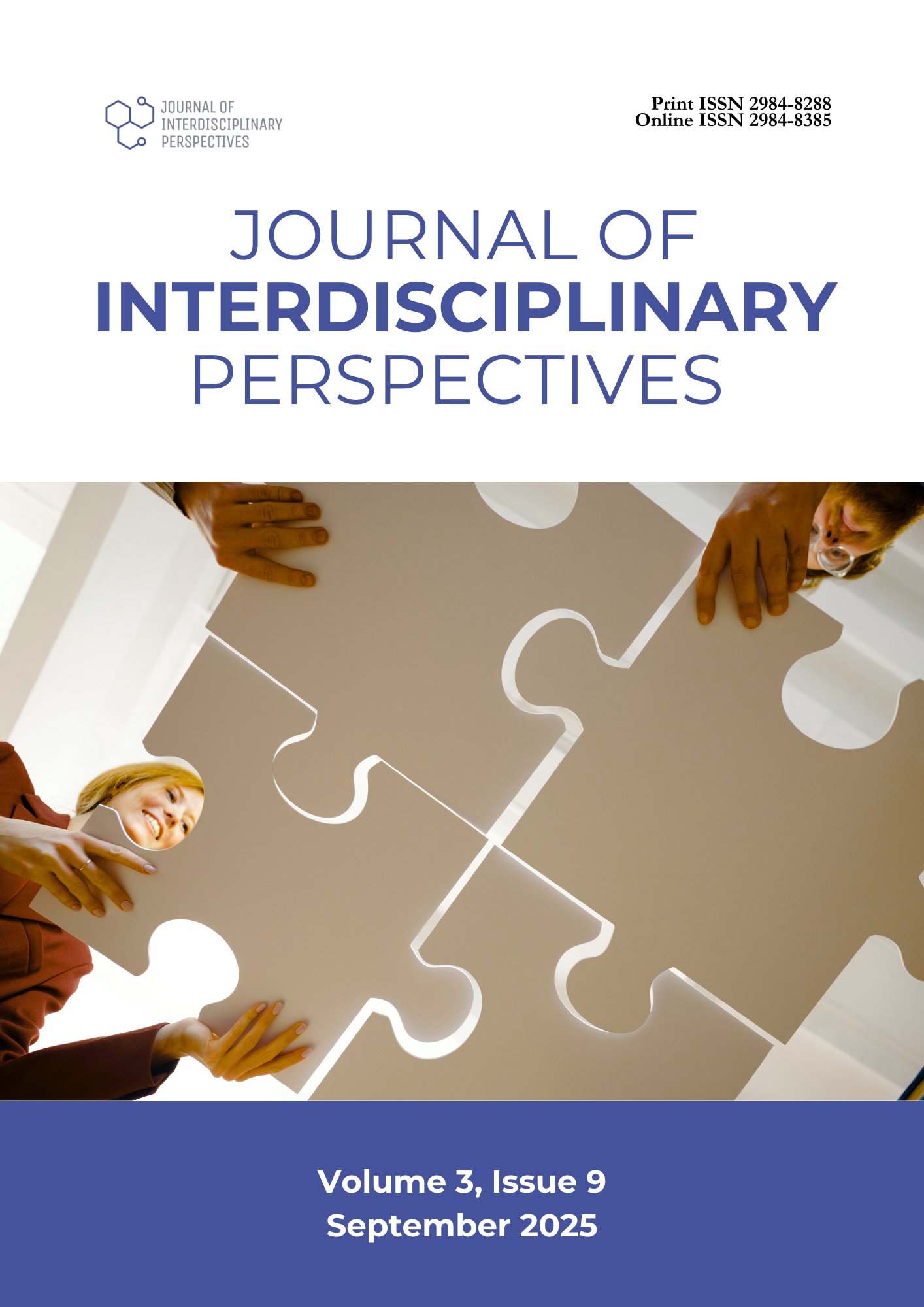Grade 7 Students’ Perceptions of Class Homogenization and Inclusivity and their Relationship to Academic Performance
DOI:
https://doi.org/10.69569/jip.2025.593Keywords:
Class homogenization, Perceived inclusivity, Academic performance, Student perceptionAbstract
The composition of classrooms has become a key focus in educational research due to its significant influence on student learning outcomes. This study employed a quantitative descriptive research design to explore Grade 7 students' perceptions of class homogenization and inclusivity, as well as their relationship to academic performance. Experts validated a self-made questionnaire and pilot-tested with a homogeneous class to assess reliability, yielding a Cronbach’s alpha of 0.925. The results revealed that students in highly homogenized classes have a mean score of 3.8 (SD = 0.326), reflecting a "very high level of agreement" about their positive learning environment. Conversely, students in less homogenized classes indicated a mean score of 3.6 (SD = 0.412), also demonstrating agreement but with more response variability. In an inclusive environment, students in highly homogenized classes scored 3.8 (SD = 0.445), affirming their belief in equal participation and supportive teachers. Students in less homogenized classes scored 3.76 (SD = 0.447), also showing a "very high level of agreement." The Mann-Whitney U test revealed a significant difference in academic performance between the two groups: students in highly homogenized classes (Mean = 89.9, SD = 2.82) and less homogenized classes (Mean = 83.2, SD = 4.57), with a statistically significant result (U = 107, p < 0.001). Spearman correlation analysis revealed a weak positive relationship between class homogeneity and academic performance (ρ = 0.313, p = 0.013), whereas the relationship between inclusivity and academic performance was not statistically significant (ρ = 0.042, p = 0.744). Overall, class homogenization had a measurable effect on academic performance, with students in highly homogenized classes having higher academic scores. Inclusivity was rated highly in both groups; however, no significant relationship was found between inclusivity and academic performance. These findings suggest that educational strategies should consider class composition to enhance students’ academic outcomes.
Downloads
References
Alnahdi, G. H. (2020). Inclusive education in Saudi Arabia and the United Nations Convention on the Rights of Persons with Disabilities: A critical analysis. International Journal of Disability, Development and Education, 67(2), 168–180. https://doi.org/10.1080/1034912X.2019.1634796
Ballen, C. J., Wieman, C., Salehi, S., Searle, J. B., & Zamudio, K. R. (2017). Enhancing diversity in undergraduate science: Self-efficacy drives performance gains with active learning. CBE—Life Sciences Education, 16(4), ar56. https://doi.org/10.1187/cbe.16-12-0344
Burns, R. B., & Mason, J. (2002). The influence of class composition on student performance. Educational Studies, 28(3), 267–280. https://doi.org/10.1080/0305569022000020930
Campoy-Cubillo, M. C. (2019). Functional diversity and the multimodal listening construct. European Journal of Special Needs Education, 34(2), 204–219. https://doi.org/10.1080/08856257.2019.1581402
Deskmate, A., Smith, J., & Johnson, L. (2013). The role of classroom environment in student learning. International Journal of Education Research, 5(1), 45–60. https://doi.org/10.1016/j.ijer.2013.01.002
Ertesvåg, S. K., Havik, T., Vaaland, G. S., & Lerang, M. S. (2024). Teachers’ instructional support and students’ peer relationships in the classroom. Teachers and Teaching, 1–15. https://doi.org/10.1080/13540602.2024.2389394
Florian, L., & Spratt, J. (2013). Enacting inclusion: A framework for interrogating inclusive practice. European Journal of Special Needs Education, 28(2), 119–135. https://doi.org/10.1080/08856257.2013.778111
Gentrup, S., Lorenz, G., Kristen, C., & Kogan, I. (2020). Self-fulfilling prophecies in the classroom: Teacher expectations, teacher feedback, and student achievement. Learning and Instruction, 66, 101296. https://doi.org/10.1016/j.learninstruc.2019.101296
Hienonen, L., Kallio, J., & Rantala, J. (2018). The effects of class composition on academic performance. Educational Research and Reviews, 13(4), 123–135. https://doi.org/10.5897/ERR2017.3356
Huang, W., & Zhu, R. (2020). The effect of peers on students’ academic achievement: Evidence from China’s middle schools. Journal of Population Economics, 33(1), 93–136. https://doi.org/10.1007/s00148-020-00780-8
Jardinez, M. J., & Natividad, L. R. (2024). The advantages and challenges of inclusive education: Striving for equity in the classroom. Journal of Education and Human Development, 13(1), 23–32. https://doi.org/10.15640/jehd.v13n1a3
Kuzmina, Y., & Ivanova, A. (2018). The effects of academic class composition on academic progress in elementary school for students with different levels of initial academic abilities. Learning and Individual Differences, 64, 43–53. https://doi.org/10.1016/j.lindif.2018.04.004
Lindner, M., Nusser, M., Gehrer, K., & Schwab, S. (2021). The relationship between inclusivity and academic performance in diverse classrooms. International Journal of Inclusive Education, 25(6), 635–650. https://doi.org/10.1080/13603116.2020.1761234
Manyatsi, T. (2020). Implementation of inclusive education in high schools in Eswatini: Teachers’ preparedness and challenges. International Journal of Education and Research, 8(6), 75–88. https://www.ijern.com/journal/2020/June-2020/07.pdf
Mavuso, M. F. (2020). Challenges facing teachers in implementing inclusive education in Swaziland’s secondary schools. International Journal of Inclusive Education, 24(8), 882–896. https://doi.org/10.1080/13603116.2018.1516824
Mazenod, A., Francis, B., Archer, L., Hodgen, J., Taylor, B., Tereshchenko, A., & Pepper, D. (2018). Nurturing learning or encouraging dependency? Teacher constructions of students in lower attainment groups in English secondary schools. Cambridge Journal of Education, 49(1), 53–68. https://doi.org/10.1080/0305764X.2018.1441372
Nishina, A., Juvonen, J., & Witkow, M. (2019). The effects of inclusive education on academic and social outcomes. Journal of Educational Psychology, 111(4), 678–690. https://doi.org/10.1037/edu0000345
Salehi, M., Khosravi, H., & Khosravi, M. (2019). A meta-analysis of the effects of homogeneous grouping on academic performance. Educational Psychology Review, 31(3), 345–367. https://doi.org/10.1007/s10648-019-09456-5
Steenbergen-Hu, S., Makel, M. C., & Olszewski-Kubilius, P. (2016). What one hundred years of research says about the effects of ability grouping and acceleration on K–12 students’ academic achievement: Findings of two second-order meta-analyses. Review of Educational Research, 86(4), 849–899. https://doi.org/10.3102/0034654316675417
St. John, E. P., Hu, S., & Fisher, J. (2021). The impact of class composition on student engagement and performance. Journal of Higher Education, 92(1), 45–67. https://doi.org/10.1080/00221546.2020.1751234
United Nations Educational, Scientific, and Cultural Organization. (2017). A guide for ensuring inclusion and equity in education. https://unesdoc.unesco.org/ark:/48223/pf0000248254
Zimmermann, F., Gorges, J., & Ludwig, J. (2023). How tracking affects student motivation and performance: Evidence from a German secondary school reform. School Effectiveness and School Improvement, 34(1), 93–114. https://doi.org/10.1080/09243453.2022.2080143
Downloads
Published
How to Cite
Issue
Section
License
Copyright (c) 2025 Journal of Interdisciplinary Perspectives

This work is licensed under a Creative Commons Attribution-NonCommercial 4.0 International License.








